 |
 |
 |
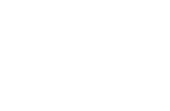
|
Marc Chagall working on the panels for New York’s Metropolitan Opera: The Triumph of Music, 1966. Paris, Atelier des Gobelins. © SODRAC & ADAGP 2017, Chagall ®. Photo © Izis-Manuel Bidermanas
|
|
 |
CHAGALL: COLOUR AND MUSIC
CHAGALL: COLOUR AND MUSIC
Chagall in Canada exhibition event presented as part of Montreal’s 375th anniversary
Jean-Noël Desmarais Pavilion – Level 3
The Montreal Museum of Fine Arts (MMFA) presents CHAGALL: COLOUR AND MUSIC, the largest exhibition ever devoted to Marc Chagall (1887-1985) in Canada. The exhibition explores, for the first time, the omnipresence of music in the artist’s life and work, through close to 340 works and a major documentary corpus. This unusual approach demonstrates the degree to which Chagall’s aesthetic and artistic world is imbued with music, from his paintings, works on paper, costumes, sculptures, ceramics, stained glass and tapestries, to his creations for the stage and his grand decorative and architectural projects.
|

|
Posted 24 April 2017
|
Share this:
|
|
This major exhibition reveals some fabulous costumes rarely seen by the public and some decors produced by the artist for the ballets Aleko (1942), The Firebird (1945) and Daphnis and Chloé (1958-59), and the opera The Magic Flute (1967), thanks to some exceptional loans granted by the Opéra de Paris, the New York City Ballet and the New York Metropolitan Opera. They are staged in such a way as to recreate the particular atmosphere of each show by means of subtle special effects.
With its fully spatialized musical accompaniment, the exhibition is accompanied by various multimedia devices: music, films, photo slides and especially an extraordinary projection of the famous ceiling of the Opéra de Paris, in the Palais Garnier. In partnership with the Opéra national de Paris, Google lab and Google Art Project in Paris digitized in ultra-high definition this 220 m2 painting completed in 1964 by Chagall. A huge technological challenge, some stunning zoom effects were used on these images to reveal the splendour of the material and the meticulous detail, which up to now have been invisible to the naked eye, of this monumental decor, Chagall’s tribute to 14 composers.
|
|
|
|
|
|
|
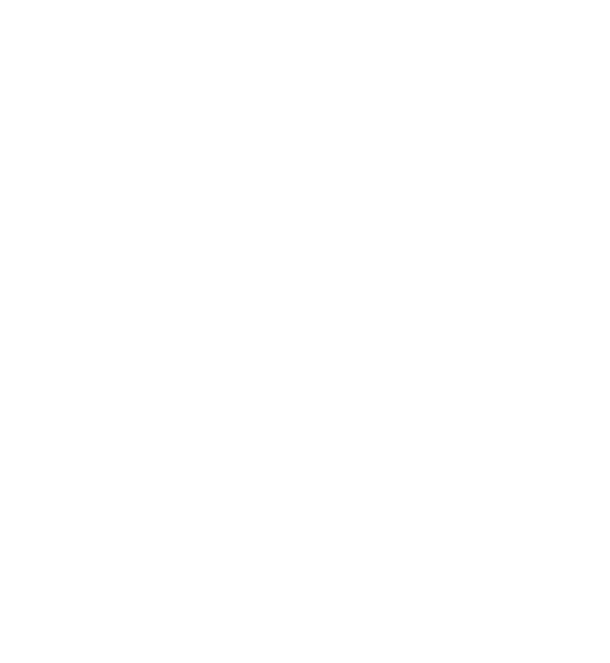
Marc Chagall (1887-1985), Costumes for Daphnis and Chloe: A Shepherdess, 1959. Paris, Opéra national. © SODRAC & ADAGP 2017, Chagall ®. Photo © Museum Associates / LACMA
|
|
|
|
|

|

|

|
The exhibition also explains how the ceiling of the Opéra de Paris, and the decorative and architectural programme of the Metropolitan Opera at Lincoln Center for the Performing Arts in New York (1966) embody the concept of total art dear to the artist and testify to his research into the universality of music and how it is revealed in architecture.
Following the joint presentation of the exhibition at the Cité de la musique – Philharmonie de Paris, and La Piscine – Musée d’art et d’industrie André Diligent de Roubaix in 2015-2016, the Montreal edition has been enhanced by over 100 works, including some rarely loaned masterpieces: Golgotha (1912), Self-portrait with Seven Fingers (1912-1913), the Birth (1911- 1912) and the Green Violinist (1923-1924), brought together by some major institutions, such as the Solomon R. Guggenheim Museum (New York), the Philadelphia Museum of Art, the National Gallery of Art (Washington), the Art Institute of Chicago, the Musée national d’art moderne (Paris), the Stedelijk Museum (Amsterdam), the Musée d’art et d’histoire du Judaïsme (Paris), the Musée national Marc Chagall (Nice), the Museum of Modern Art (New York), the Fondation Beyeler (Riehen/Bâle) and the Los Angeles County Museum of Art.
|
|
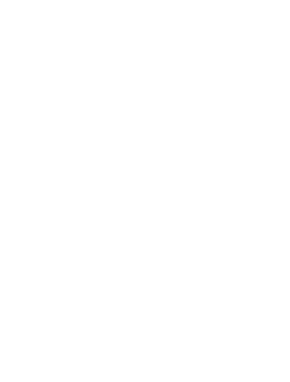
Marc Chagall (1887-1985), The Blue Circus, 1950-1952, oil on canvas, 232.5 × 175.8 cm. Nice, Musée national Marc Chagall, on deposit from the Musée national d’art moderne – Centre Pompidou, Paris.
© SODRAC & ADAGP 2017, Chagall ®. © CNAC / MNAM / Dist. RMN-Grand Palais / Art Resource, NY. Photo Gérard Blot
|
|
|
|

|

|

|
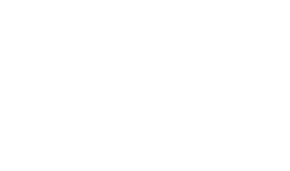
Marc Chagall (1887-1985), Backdrop design for The Firebird: “The Enchanted Palace” (Act II), 1945, gouache, graphite and gold paper collage on paper, 37.5 x 62 cm. Private collection. © SODRAC & ADAGP 2017, Chagall ®. © Archives Marc et Ida Chagall, Paris
|
|
Nathalie Bondil, Director and Chief Curator of the MMFA explains: “An artist without borders, Marc Chagall orchestrated a work consisting of many forms of expression: easel painting, mural decor, book illustrations, lithographic collections, stage costumes, sculptures, ceramics, stained glass windows, mosaics… In this score, music provides all the harmony: songs from his childhood, religious prayers, fairs, readings, ballet and opera performances, and of course a broad repertoire from classical (Bach and Mozart) and contemporary (Schoenberg and Messiaen) composers. Here, astonishingly, for the first time, the soundtrack of his life forms the subject of an exhaustive exhibition.”
“This exhibition is an original exploration of all the sounds and all the colours of which the oeuvre of Marc Chagall is made. Multidisciplinary and interactive, with the exceptional works, and the inclusion of music, photographs, and films along the way, it is an invitation to a sensory immersion in the work of one of the most important and remarkable artists of the 20th century,” added Ambre Gauthier, Guest Curator.
|
|
|
|
|

|

|

|
“As Chagall constantly repeated, the three most essential elements in life for him were the Bible, love and Mozart. His entire work is imbued with music. I had the great honour of knowing Marc Chagall during the last years of his life, when I realized how deep his knowledge of music was, ranging from klezmer to Stockhausen, and also of his interest in complete art, which is evident in his theatrical and monumental productions. It is a special pleasure to have had the privilege of lending my support to this event, which reveals the new light cast by this genius,” added Mikhaïl Rudy, Musical Director of the Exhibition.
“With this explosion of luminous colours and shapes, through which the visitor is invited to succumb to the enchantment, and to discover and explore the pictorial and sculptural world of Marc Chagall, among roots, rhythms and harmonies in balance, the artist consumed by his thirst for constant renewal reveals himself to be a very involved, attuned and visionary witness to the times of light and darkness that still concern us today,” stated Meret Meyer, Vice-president of the Comité Marc Chagall, and Bella Meyer, granddaughters of the artist.
The MMFA’s interest in the links uniting music and the visual arts in Chagall is consistent with the themes of its earlier exhibitions Warhol Live: Music and Dance in Andy Warhol’s Work (2008) and Splendore a Venezia: Art and Music from the Renaissance to Baroque in Venice (2014).
|
|
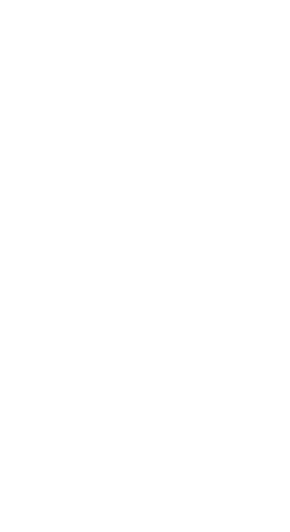
Marc Chagall (1887-1985), Green Violinist, 1923-1924, oil on canvas, 198 x 108.6 cm. New York, Solomon R. Guggenheim Museum. Solomon R. Guggenheim Founding Collection, by gift. © SODRAC & ADAGP 2017, Chagall ®. Photo The Solomon R. Guggenheim Foundation / Art Resource, NY
|
|
|
|
|
|
This foray into the enchanting world of this painter of music also marks the opening of the Pavilion for Peace, which is dedicated to international art and education. This fifth pavilion of the MMFA, inaugurated just in time for the 375th anniversary of Montreal, bears the name of the Jewish Holocaust-survivor couple and great donors, collectors and music-lovers, Michal and Renata Hornstein. This exhibition is dedicated to them.
The exhibition will feature a klezmer violin decorated with the Star of David, which would have belonged to a typical Belarusian family like Chagall’s. It is on loan from Amnon Weinstein, the celebrated luthier who has spent the last twenty years locating and restoring violins that were played by Jews in the concentration camps and ghettos during the Nazi era. Weinstein, many of whose relatives perished during the Holocaust, named these instruments “Violins of Hope.”
|
|

|

|

|
THE DESIGN: A SYMPHONY OF COLOURS
The layout of this major exhibition is both chronological and thematic, covering all periods of the artist’s long and productive career – his years in Russia, his Parisian period, his exile in New York, his time in Mexico and his life in the South of France – and examines all his forms of expression.
Cultural and Religious Roots Music was at the heart of Chagall’s art from the very beginning. Selected drawings and paintings give us a sense of the cultural and religious context of his childhood in Vitebsk in White Russia (today Belarus), the role of song in the synagogue and the influence of his family members, several of whom were musicians. Large paintings of the archetypal violinist demonstrate the importance of this figure in his work and the ubiquity of the violin itself, the instrument of the exodus, carried by the Jewish people as they fled or migrated. Music will also be heard in the first galleries in order to give visitors a deeper, transversal experience of Chagall’s work.
|
|
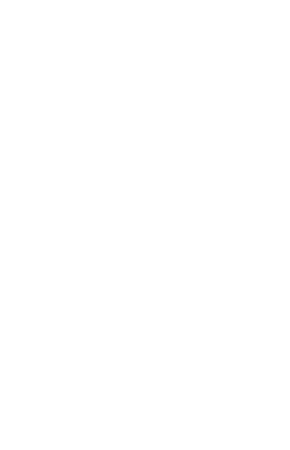
Marc Chagall (1887-1985), Costume for The Firebird: Koschei, 1949, jacket, bodice, pants, spats, gloves, mask, headdress. New York City Ballet. © SODRAC & ADAGP 2017, Chagall ®. Photo Luc Lois
|
|
|
|

|

|

|
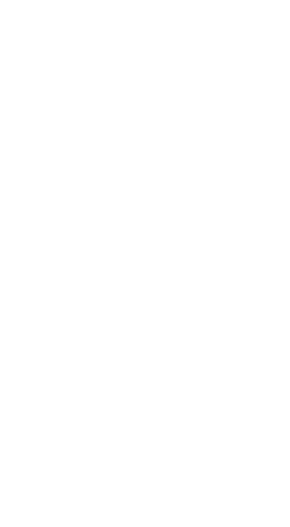
Marc Chagall (1887-1985), Costume for The Magic Flute: Green Face Costume (Queen of the Night), 1967 (mask reconstruction: 2016), costume, mask, shoes, tights, gloves. New York, Metropolitan Opera. © SODRAC & ADAGP 2017, Chagall ®. Photo © Museum Associates / LACMA
|
|
Musical and Plastic Rhythms The exhibition continues with a sequence devoted to the musical and plastic rhythms in the artist’s oeuvre, apparent in compositions inspired by Cubism (Birth, 1911-1912; and Self-portrait with Seven Fingers, 1912-1913) and inverted figures in movement (The Gamblers, 1919), and also in pieces exploring the world of the circus (The Blue Circus, 1950- 1952). The illustrations for the Fables of La Fontaine, commissioned by Ambroise Vollard, which Chagall executed in 1926-1927, highlight the connection between the musicality of the human voice and the creation of art – his wife, Bella, read passages of La Fontaine’s work to him while he was drawing or painting. The presence in the show of stained glass windows, created in partnership with the Atelier Simon Marq in Reims, of sculptures, ceramics and a monumental tapestry woven by Yvette Cauquil-Prince enlarges our appreciation of an extremely rich and diverse body of work.
|
|
|
|
|

|

|

|
Ballets Three galleries are devoted to the ballets for which Chagall designed the sets and costumes: Aleko (1942, Mexico City), The Firebird (1945, New York) and Daphnis and Chloe (Brussels-Paris, 1958-1959). The costumes for these ballets reveal specific sources of inspiration, from the culture and colours of Mexico and the imaginative fairy tales of Russia to the sunlight and aesthetic glory of Ancient Greece. Alongside Daphnis and Chloe – the ballet that evokes the ambience of the Mediterranean and the contrasts of sunlight and stone – visitors will discover two sequences in the stained glass art, the sculptures and ceramics that Chagall associated closely with his search for musicality in his work. These pieces, which are rarely exhibited in museums, demonstrate his versatility, as he experimented in every medium with the same urgent desire to create.
|
|
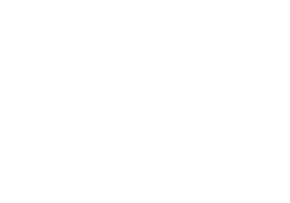
Marc Chagall (1887-1985), Backdrop design for Daphnis and Chloe (Act II), 1958, gouache, graphite, coloured pencil and tempera on paper, 56 x 79.5 cm. Private collection. © SODRAC & ADAGP 2017, Chagall ®.
© Archives Marc et Ida Chagall, Paris
|
|
|
|

|

|

|
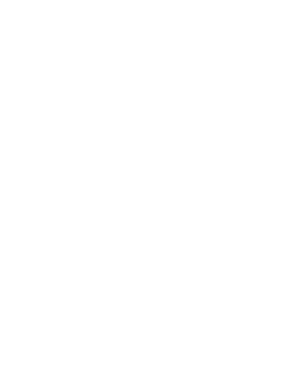
Marc Chagall (1887-1985), Half-past Three (The Poet), 1911, oil on canvas, 195.9 x 144.8 cm. Philadelphia Museum of Art, The Louise and Walter Arensberg Collection. © SODRAC & ADAGP 2017, Chagall ®
|
|
Operas The exhibition continues with a focus on the opera The Magic Flute (New York, 1966- 1967), for which Chagall designed over a hundred costumes, masks and sets. As a tribute to the 50th anniversary of the artist’s creations for the Metropolitan Opera, these magical costumes, composed of layers of fabric, are displayed beside the preparatory sketches for the opera and for the two panels for the Lincoln Center, for which Chagall also designed the murals. The exhibition ends on a high note with the presentation of the ceiling of the Paris Opera (1964), an artistic and musical pantheon conceived by the artist, thanks to a video shot by Google lab and Google Art Project. This close-up view allows us to appreciate details of the work that are normally invisible to the naked eye.
CHAGALL’S LITTLE BOX: FUN FOR CHILDREN AND FAMILIES
A place of wonder, creativity and discovery, this gallery-workshop for children and their families is an invitation to enter into the poetic and colourful world of the painter. Imaginative workshops and playful modules for children aged 4 to 13 and their families offer an extension to their tour of the exhibition. Digital facilities and multimedia devices provide everyone with a concrete experience in which the world of Chagall and his links with music come to life.
Chagall’s Little Box was designed by the Cité de la musique – Philharmonie de Paris.
|
|
|
|
|
|
PUBLICATION
The exhibition is accompanied by a 416-page art book containing some 646 illustrations, published in English and French by the MMFA and Les Éditions Gallimard, under the general editorship of Ambre Gauthier, Guest Curator, and Meret Meyer, the artist’s granddaughter and vice-president of the Comité Marc Chagall. It contains texts by Nathalie Bondil, Nathalie Hazan- Brunet, Ulysse Hecq-Cauquil, Michaël de Saint-Cheron, Julien Flak, Sylvie Forestier, Bruno Gaudichon, Ambre Gauthier, Evgenia Kuzmina, Bella Meyer, Benoît Marq, David McNeil, Meret Meyer, Mikhaïl Rudy, Christine Vargas and Éric de Visscher.
|

|

|

|
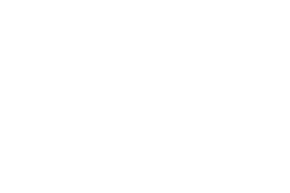
Marc Chagall (1887-1985), Backdrop design for Aleko: “A Wheatfield on a Summer’s Afternoon,” 1942, gouache, watercolour and pencil on paper, 38.5 x 57.2 cm. New York, Museum of Modern Art, acquired through the Lillie P. Bliss Bequest. © SODRAC & ADAGP 2017, Chagall ®. Photo © The Museum of Modern Art / Licenced by SCALA / Art Resource, NY
|
|
CHAGALL’S PAINTING AS YOU’VE NEVER HEARD IT BEFORE AT BOURGIE HALL
The Arte Musica Foundation will present a fascinating musical portrait of Marc Chagall in twelve concerts at Bourgie Hall, which seats 460, and four lectures in the Maxwell Cummings Auditorium. Echoing the many kinds of music that influenced the painter, this series will take us into his flamboyant world. The Jewish music of his childhood, the French composers of the early 20th century and the classical music of his native Russia are all part of this rich programme, a kaleidoscope in which musical and pictorial languages combine in a colourful dialogue!
For details of the programme, visit mbam.qc.ca/en/concerts
ACKNOWLEDGEMENTS
The exhibition was made possible thanks to the generous support of RBC, Presenting Sponsor of CHAGALL: COLOUR AND MUSIC, and Federation CJA, Major Patron in celebration of their hundredth anniversary.
The Museum extends its thanks to the Azrieli Foundation for making it possible to present major works of art in this exhibition.
The Museum is also grateful for the invaluable financial contribution of Jordan Aberman, Betsy Pomerantz & Sam Berliner, Ann Birks, Barbara Bronfman, Claudine & Stephen Bronfman, Freda & Irwin Browns, Joanne & Douglas Cohen, Sylvie Plouffe & Barry Cole, Elaine & Richard Dubrovsky, Maurice Forget, Isabelle Benoit & Geoffrey Gelber, Adam Goldberg, Michael Goodman, Steve Gross, Joelle & Bruce Kent, Leo Kolber, Ellen Wallace & David Laidley, Céline & Jacques Lamarre, Lillian & Billy Mauer, Marie Senécal-Tremblay & Bruce McNiven, Jacqueline McClaran & Jonathan Meakins, Elaine Tolmatch & David Pariser, Rhoda & Joel Pinsky, Betty Palik & Michael Prupas, Julia & Stephen F. Reitman, Hilary Pearson & Michael Sabia, Sara & Irwin Tauben, the MMFA’s Chagall Ambassadors – a group of private Montreal donors who gave generously to the fundraising initiative organized by Ann Birks, Joanne Cohen, Lilian Mauer, Marie Senécal-Tremblay and Elaine Tolmatch, to whom we extend our sincere thanks.
|
|
|
|
|

|

|

|
The Museum wishes to thank Osler, Hoskin & Harcourt and acknowledges the vital contribution of Air Canada, the Volunteer Association of the Montreal Museum of Fine Arts, Tourisme Montréal, the Consulate General of Israel in Montreal, as well as Bell, La Presse and the Montreal Gazette.
The Museum extends its thanks to Quebec’s Ministère de la Culture et des Communications and the Conseil des arts de Montréal for their ongoing support. The exhibition also received the support of the Department of Canadian Heritage through its Canada Travelling Exhibition Indemnification Program. The Museum’s International Exhibition Programme is aided financially by the Exhibition Fund of the Montreal Museum of Fine Arts Foundation and the Paul G. Desmarais Fund.
The Museum would also like to thank the Volunteer Guides for their indispensable contribution, as well as all its members and the many individuals, corporations and foundations – in particular the Fondation de la Chenelière, directed by Michel de la Chenelière, and the Arte Musica Foundation, presided over by Pierre Bourgie – for their generosity.
We would also like to extend our gratitude to all those who, through their generous assistance, encouragement and support, made this exhibition and scholarly publication possible.
CREDITS AND CURATORIAL TEAM
This exhibition was organized by the Montreal Museum of Fine Arts in collaboration with the Los Angeles County Museum of Art (LACMA) and initiated by the Cité de la musique – Philharmonie de Paris, and La Piscine – Musée d’art et d’industrie André Diligent, Roubaix, with the support of the Chagall Estate.
The Guest Curator of the exhibition is Ambre Gauthier, who holds a PhD in art history. The curatorial committee is composed of Bruno Gaudichon, Chief Curator, La Piscine – Musée d’art et d’industrie André Diligent, Roubaix; Stephanie Barron, Senior Curator of Modern Art, LACMA; and Meret Meyer of the Comité Marc Chagall. In Montreal, the curators are Nathalie Bondil, MMFA Director and Chief Curator, and Anne Grace, Curator – Exhibitions and Education, MMFA.
The musical director is the internationally renowned pianist Mikhail Rudy.
The exhibition design is by Menkes Shooner Dagenais Letourneux Architectes, under the direction of Sandra Gagné, Head of Exhibitions Production at the MMFA
|
|
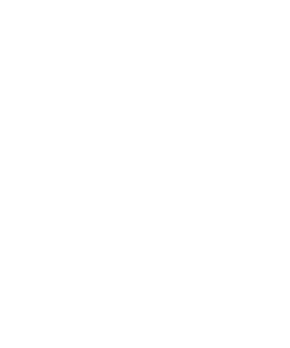
Marc Chagall (1887-1985), Final model for the wall painting at the Metropolitan Opera, Lincoln Center for the Performing Arts, New York: The Triumph of Music (detail), 1966, tempera, gouache and collage on paper mounted on Korean paper, 109 × 91.5 cm. Private collection.
© SODRAC & ADAGP 2017, Chagall ®. © Archives Marc et Ida Chagall, Paris
CHA_1053
|
|
|

|

|

|

|

|
|
|
Marc Chagall (1887-1985), Costume for Aleko: Gypsy with playing cards, 1942. Private collection. © SODRAC & ADAGP 2017, Chagall ®.
© Archives Marc et Ida Chagall, Paris
|
|
|
|
|
Marc Chagall, Final model for the ceiling of the Opéra de Paris, 1963, gouache on cloth-backed paper, 140 x 140 cm. Private collection.
© SODRAC & ADAGP 2017, Chagall ®. © Archives Marc et Ida Chagall, Paris
|
|
|
|
|
Marc Chagall (1887-1985), Birth, 1911-1912, oil on canvas, 113.4 x 159.3 cm. The Art Institute of Chicago, gift of Mr. and Mrs. Maurice E. Culberg. © SODRAC & ADAGP 2017, Chagall ®. Photo The Art Institute of Chicago / Art Resource, NY
|
|
|
|
|
|
|
|
|


